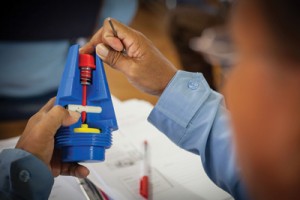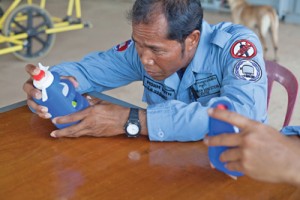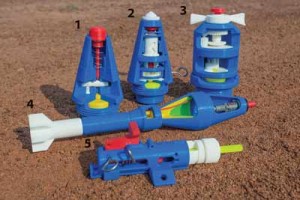Allen Tan runs a U.S. non-profit lab operating out of Cambodia called Golden West Humanitarian Foundation, funded by the U.S. Department of State. He reached out to 3DPI to let us know about a unique program that Golden West has been working with both MIT and Singapore University of Technology and Design to create a set of 3D printed training materials to better educate how to defuse bombs to bomb disposal (Explosive Ordinance Disposal or EOD) technicians.

Even some of the more advanced programs around the world have a tough time getting their hands on materials that would allow them to effectively demonstrate how fuze mechanisms function, particularly in the Asia-Pacific region. Most nations operate at least one EOD school, but many in the Asia-Pacific region require assistance in the form of inert ordnance training aids from humanitarian agencies like Golden West.
Distribution of these materials is often capped for a number of reasons, according to Golden West:
- There is a limited supply of donor ordnance
- They require highly specialized technicians for production
- There is an inherent risk to technicians
- They require labor-intensive craftsmanship (2–20 or more hours for one item)
- There are international shipping regulations that severely limit distribution

In order to addressthe issue of generalized fuze replicas, Allen and Golden West created a Standard Ordnance Training Set (SOTS) that includes a growing database of ordnance 3D models, some of which require more than 100 hours to create. Golden West has already begun 3D printing the AOTM models, using ABS filament to 3D print various versions until they had satisfactory standard set. A huge priority was designing and printing them in such a way that the AOTM models would be both reusable and durable. Golden West created a set of 10 ordnance models, and each has an accompanying learning objective.

Though important, Golden West’s efforts are just a small part of the 3D printing industry in developing nations. The technology has huge potential for countries and, for that reason, Allen will be discussing the impact that it may have for these countries at the Inside 3D Printing Conference and Expo in Singapore next week.



